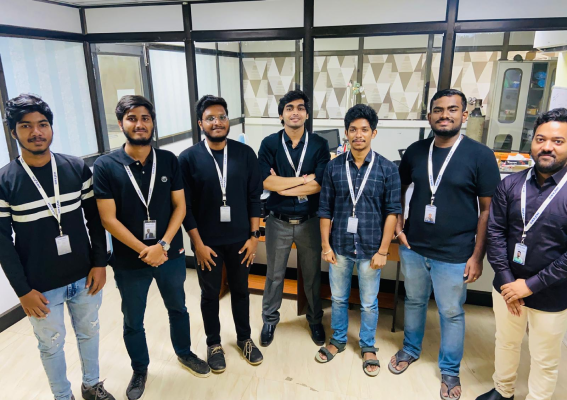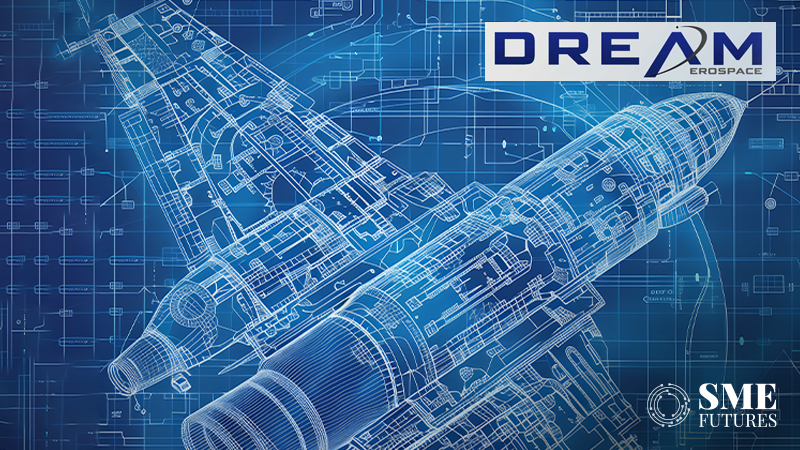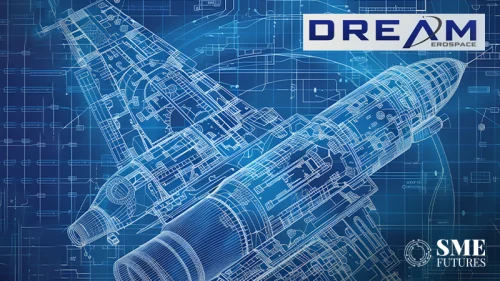In an era where space exploration is no longer the exclusive domain of government agencies but a burgeoning frontier for private enterprises, the need for sustainable and efficient technologies has never been more pressing. Enter Dream Aerospace, a start-up founded with a bold vision to revolutionise satellite propulsion by offering cleaner, more efficient, and sustainable alternatives. Founded by Hari Krishnan KJ and Rogith S, the company is on a mission to redefine space propulsion, ensuring that the final frontier remains as pristine as possible.
Genesis of Dream Aerospace
The inspiration behind Dream Aerospace stems from a glaring gap in the aerospace industry. “The aerospace industry has long relied on toxic propellants. We aim to close this gap by offering high-performance, eco-friendly propulsion solutions that ensure safety, scalability, and cost-effectiveness.” says Hari Krishnan KJ, Co-Founder and CEO of Dream Aerospace.
Hari’s journey into the aerospace sector was fuelled by a passion for sustainability and innovation. Recognising the environmental toll of traditional propulsion systems, he saw an opportunity to create something transformative. “Our mission is to redefine space propulsion with sustainable technology that reduces environmental impact while improving performance and reliability. By pioneering green propulsion, we aim to drive innovation, support next-generation satellite mobility, and contribute to global sustainability goals in space exploration,” he elaborates.

Unique value proposition
Dream Aerospace stands out in the crowded aerospace market by focusing on RH521-based green propulsion systems. “We lead the development of RH521-based green propulsion systems, offering a safer and cost-effective alternative to conventional toxic fuels. Our propulsion systems provide higher energy density, improved efficiency, and enhanced manoeuvrability. Designed for scalability, our solutions cater to a wide range of satellite platforms, from CubeSats to large geostationary satellites,” Hari asserts.
The core technology behind Dream Aerospace’s propulsion systems is both innovative and groundbreaking. “Our green propulsion system integrates an advanced catalyst that enhances combustion efficiency, ensuring higher thrust, lower ignition temperatures, and better fuel utilisation. This results in improved satellite performance, extended mission lifespans, and safer handling compared to traditional chemical propulsion methods,” he adds.
Balancing innovation with scalability
One of the most significant challenges in the aerospace industry is balancing innovation with scalability and cost-effectiveness. Dream Aerospace has managed to strike this balance through strategic product development. “We optimise our propulsion system by leveraging cost-effective manufacturing techniques, including modular designs and automation. Our use of a high-efficiency catalyst ensures long-term performance and reduced maintenance costs. By collaborating with key industry players, we scale production while maintaining affordability and innovation,” Hari contends.
“Sustainability is a core principle at Dream Aerospace. Our RH521 propellant and catalyst significantly reduce emissions and toxic waste, extending satellite lifespans while minimising space debris. By prioritising cleaner propulsion, we align with international sustainability initiatives and drive eco-friendly advancements in space technology,” he emphasises.
Meeting customer needs
Dream Aerospace’s primary customers include satellite operators, space agencies, and aerospace companies seeking high-efficiency, green propulsion solutions. “We serve satellite operators, space agencies, and aerospace companies seeking high-efficiency, green propulsion solutions. Our technology is tailored to meet mission-specific requirements, ensuring optimal performance, safety, and cost-effectiveness for Earth observation, communications, and deep-space exploration missions,” Hari explains.
Entering the aerospace market is no small feat, given the high entry barriers and established competitors. “The aerospace market presents high entry barriers, including strict regulations and established competitors. Dream Aerospace differentiates itself by focusing on RH521-based propulsion, which offers safer handling, superior efficiency, and compliance with emerging sustainability regulations. Our modular and customisable solutions cater to diverse mission needs, ensuring a competitive edge,” he acknowledges.
A defining moment
Reflecting on his entrepreneurial journey, Hari recalls a particularly rewarding moment. “One of our defining moments was the successful full-scale test of our propulsion system. This milestone validated our years of research and teamwork, reinforcing our belief in sustainable aerospace innovation. It demonstrated that perseverance, collaboration, and cutting-edge engineering can overcome industry challenges and drive meaningful advancements in space technology,” he reminisces.
Dream Aerospace is not just another start-up in the aerospace industry; it is a beacon of innovation and sustainability. With a clear mission, groundbreaking technology, and a dedicated team, the company is poised to make a significant impact on the future of space exploration. As Hari Krishnan KJ and his team continue to push the boundaries of what’s possible, one thing is certain: the sky is the limit for Dream Aerospace.
Accelerating growth through funding
Funding has played a crucial role in accelerating Dream Aerospace’s growth. “Funding is critical in accelerating our R&D, testing, and regulatory approvals. We are expanding production through advanced manufacturing, optimising supply chains, and integrating automation to increase efficiency. Global market expansion remains a key focus, ensuring our propulsion systems reach a broader range of commercial and governmental space missions,” Hari says.
Looking ahead, Dream Aerospace has set ambitious milestones for the next 12–18 months. “Our priorities include completing full-scale propulsion system testing, securing regulatory certifications, expanding partnerships with satellite manufacturers, and refining our technology for deep-space applications. Additionally, we aim to publish environmental impact data to highlight our contribution to sustainable space exploration,” he adds.
Overcoming challenges
Like any start-up, Dream Aerospace has faced its share of challenges. “Developing innovative propulsion technology comes with technical, financial, and regulatory challenges. We mitigate risks through iterative R&D, close industry collaborations, and strategic funding initiatives. Our team remains committed to overcoming obstacles through engineering excellence, ensuring Dream Aerospace stays at the forefront of the market,” Hari notes.
However, the opportunities for Dream Aerospace are massive. “The demand for satellite constellations, commercial space ventures, and sustainable propulsion solutions is growing. Dream Aerospace is well-positioned to capitalise on these opportunities by providing advanced, environmentally responsible propulsion systems. Our commitment to innovation and scalability makes us a strong contender in the evolving space industry,” he asserts.
Culture of innovation and collaboration
The culture at Dream Aerospace is one of innovation, collaboration, and sustainability. “Our culture fosters innovation, collaboration, and sustainability. We encourage continuous learning and cross-disciplinary teamwork to drive groundbreaking advancements in propulsion technology. By empowering our team with autonomy and a shared vision, we create an environment that supports creativity and mission success,” says Hari.
Looking ahead, Hari envisions Dream Aerospace as a global leader in green propulsion technology. “Dream Aerospace aspires to be a global leader in green propulsion technology. In five years, we aim to power deep-space missions, pioneer next-generation propulsion solutions, and expand partnerships with major aerospace entities. By prioritising efficiency and sustainability, we will play a pivotal role in shaping the future of space mobility,” he avers.











